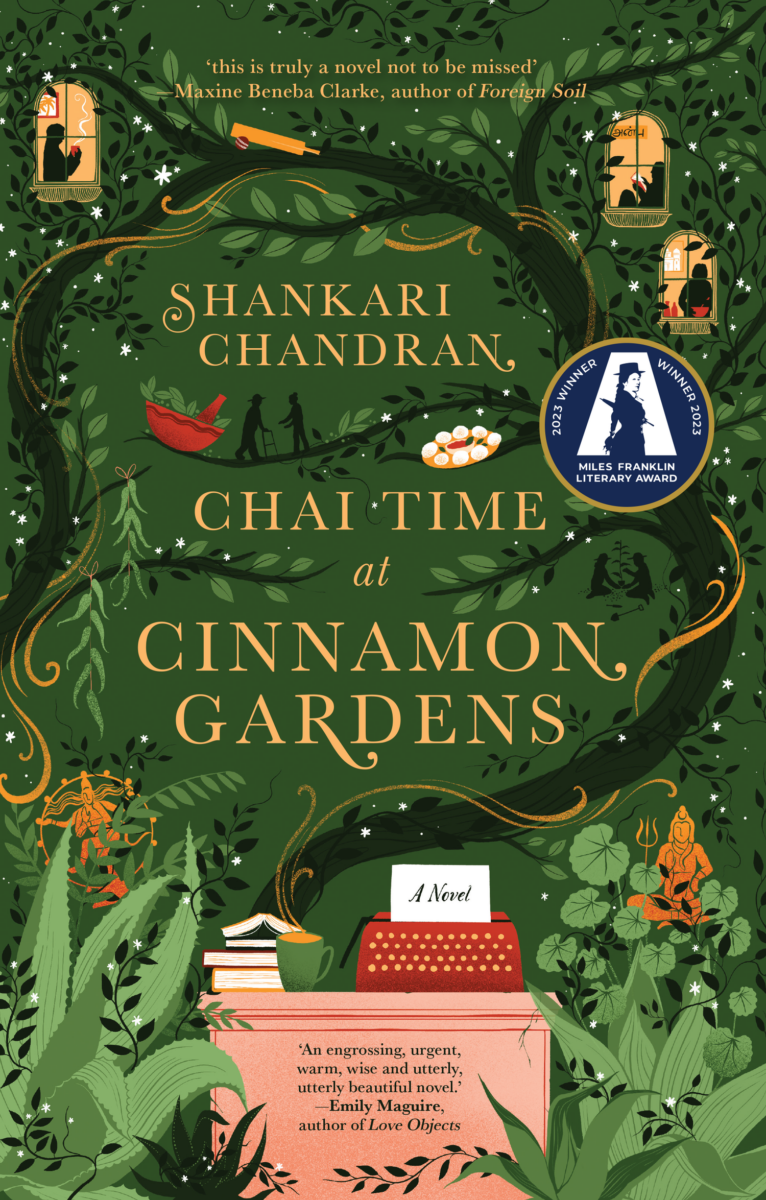
A mirror is a smooth surface that forms images through reflection, giving a true representation. This is what I think Shankari Chandran’s 2023 Miles Franklin Literary Award-winning novel, Chai Time at Cinnamon Gardens (Ultimo Press, 2022), does through recurring themes and motifs of trauma, migration, racism and imperialism as she explores White fragility, fantasy and supremacy in a colonial state – all with complex and nuanced character arcs. In this way, Chandran’s words effortlessly hold up a mirror for a racist society to see itself.
This is why the rich, diverse and often flawed characters within this brilliant novel are strikingly important, as they reflect our social systems and their (dys)functions: from Maya Ali, owner of the fictional Cinnamon Gardens Nursing Home in the Sydney suburb of Westrgove and bestselling Australian crime author under the pseudonym Clementine Kelly, to Gareth Barton, Westgrove’s acting Councillor and the ‘devil’s advocate’ for White middle-aged males.
Chai Time at Cinnamon Gardens is structured through two non-linear storylines, one within Cinnamon Gardens Nursing Home and Sydney that investigates colonialism and the erasure of Indigenous history in so-called Australia, and the other within the Jaffna Public Library and Sri Lanka that explores the Buddhist Sinhalese conquest of Tamil lands and its people.
There are two important moments in the book that explore erasure and colonialisation: one is the arson attack of the Jaffna Public Library by colonisers in 1981, Sri Lanka, where the only Tamil texts are consumed by a raging fire. The other is when a literal discussion takes place at the Australian Human Rights Commission in Sydney between defendants Dr Anji Ali and Maya Ali, Jo Sayidd, the Australian Human Rights Commission conciliator, and the complainant, Gareth Barton, on whether the removal of a statue of Captain James Cook at Cinnamon Gardens Nursing Home falls under the Racial Discrimination Act.
In this way, the nursing home is utilised as a decolonial metaphor. Cinnamon Gardens Nursing Home used to be a grand old Federation building. Now, the sandstone plinth where a statue of Captain James Cook used to sit, is empty. Instead, the “Arabian jasmine climbs the wooden trellises staked in the garden beds.” Just like the nursing home’s new owners, Maya and Zakhir Ali, the Arabian jasmine plants are “bold travellers” – a poignant visual metaphor for migration and forever living between two homelands.
Aside from seeing the world from the perspective of the owners of the nursing home, we also get a glimpse at both the Sri Lankan civil war and violent racist acts committed at Westgrove through the lens of the protagonist, Ruben. From the scars on his body, which Chandran agonisingly and beautifully describes as, “a tattoo of torn skin that hadn’t healed properly,” it is clear Ruben’s tormented character is contrasted with the feigned victimhood of Westgrove’s acting Councillor, Gareth, a middle-aged White man and aforementioned complainant.
“[P]ossession of land is nine-tenths of the law; possession of history is nine-tenths of the future.”
The following phrase is repeated throughout the novel, reiterating the importance of telling nuanced and complex stories so that all histories and viewpoints can be seen with painful clarity.
Chai Time at Cinnamon Gardens is indeed an eloquent book with a grand voice that forces readers to look into the mirror and see if their image is reflected… either as one who has been forcibly erased or as the ‘devil’s advocate’ coloniser.
First published by Aniko Press on January 17th 2024. This article has been commissioned in partnership with Aniko Press for Diversity Arts Australia’s StoryCasters project, supported by Multicultural NSW, Creative Australia and Create NSW.
Read more reviews here.
